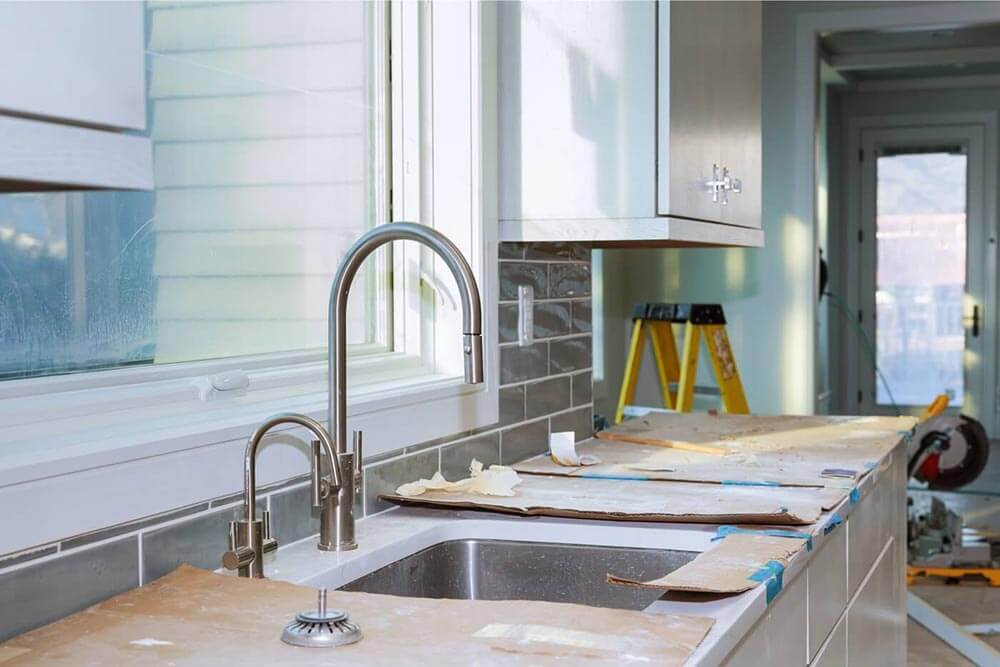Does the change in weather have you motivated to start some spring renovation projects? Whether you're tackling the kitchen, bathroom, laundry room or basement, make sure your home isn't just beautiful but safe, too. Check out this room-by-room breakdown of the most common renovation do's and don'ts.

Before you start
- Hiring a professional? Always make sure your contractor is licensed and bonded and carries insurance.
- DIY-ing? Check if your insurance will cover any potential damage caused during the renovation (like maybe an installation mistake on your part that causes a leak and water damage). Depending on the reno, you may need additional coverage.
- No matter who does the work, be sure to get the appropriate permits and comply with building codes.
- Renos can be messy. If you plan to temporarily move out of your home or move your belongings to a storage container (onsite/offsite) check your insurance policy to make sure that your home and your stuff are still fully protected.
Kitchen
Choosing all the pretty finishes for your kitchen reno is exciting. Just don't forget about what's underneath - the electrical, plumbing and HVAC.
- This is a good time to check plumbing to make sure your pipes and drainage system are in good condition.
- Ensure that water connections follow the manufacturer’s installation guidelines for your dishwasher. This is also important for fridges with water dispensers and ice makers.
- Have your stove fan vented directly outside your home and double check any gas connections.
- Remember, outlets on the wall behind counters (within 1m of a sink) must be protected by a ground fault circuit interrupter (GFCI).
Bathroom
Whether you’re updating an existing bathroom, or adding a whole new one, this tiny room is all about avoiding water damage.
- Check your plumbing to make sure your pipes and drainage system are in good condition.
- Prevent mould in the future by using moisture resistant drywall and installing a ceiling exhaust fan.
- Choose durable, water-resistant flooring and tile that are rated for bathroom use.
Laundry Room
Make laundry more enjoyable with a beautiful and functional space to do it in. Take care of both with some updates and general maintenance of your laundry room.
- Make sure your washing machine is installed according to the manufacturer’s installation guidelines.
- Dryers account for many home fires. Avoid one in your home by making sure you’ve got proper ventilation and then be sure to regularly clean the lint trap.
- Consider installing a floor drain (if possible) to help with water drainage. If you already have one, make sure it’s in good working condition.
Basement
Whether you’re just making some updates or starting from scratch, take a few precautions before you start to protect against fire and water damage down the line.
- Check for water issues before you start any work in the basement. Inside, you should look for pools of water or drips along walls and check that your sump pump and backflow valve are working. Outside, make sure the ground is graded away from your foundation and look for cracks in the foundations walls.
- Keep the space where your HVAC unit and water heater are located unfinished and accessible for future inspections and/or repairs. Be sure to follow the code requirements for spacing and framing.
- Installing a woodstove? Make sure to follow manufacturer’s installation guidelines for proper clearance around walls, furniture, curtains, etc. Also, ensure that your stove meets Wood Energy Technology Transfer (WETT) safety guidelines.
Review your insurance coverage
No matter what room you’re tackling, or how extensive the renovation is, this is a good time to review your policy. You may need to upgrade your coverage and some renos may even qualify you for savings on your insurance.